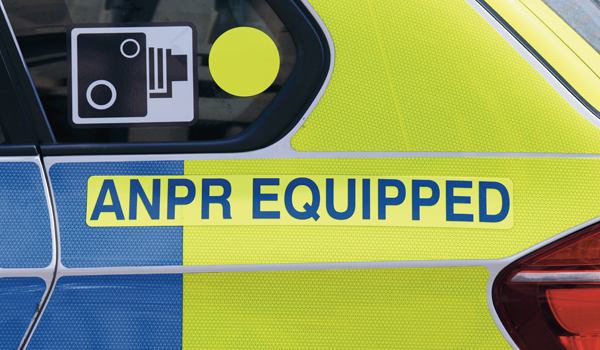Focus on flexibility
Justin Godfrey-Cass explains why police forces should be making the shift to ‘cellular-powered’ ANPR.
Automatic numberplate recognition (ANPR) plays a critical role in criminal investigations and traffic enforcement. It helps to detect, deter and disrupt crime at all levels. From effective criminal tracking to powerful evidence used in crime investigations, ANPR provides police forces across the UK with a vital solution.
Connection for this type of technology is paramount due to the time-critical nature of disruption caused and need for clear information about the location of vehicles of interest. Fixed-line infrastructure is usually the default method of connectivity for ANPR, yet this structure has become problematic and outdated, not to mention, far from efficient where devices require complex management.
Cellular connectivity can act as an alternative, or even to back up fixed-line infrastructure. With improved costs, network flexibility and security, it is no wonder more and more police forces around the UK are turning to cellular connectivity solutions for ANPR.
Avoid disruptions while cutting costs
While fixed-line infrastructure may be cheaper when it comes to usage, it is important to consider the total cost of ownership.
Cellular connectivity does make usage more expensive, but the infrastructure and maintenance cost can be significantly more expensive with fixed lines, and over a long-term period, the total cost of ownership can be notably higher.
Fixed-line infrastructure is also logistically difficult to deliver. Because of the locations of some ANPR cameras, fixed-line connectivity is not always easily available, and many forces operate deployable ANPR for short-term periods, such as events. In instances such as these, where ANPR needs to be deployed quickly and removed a short while later, a fixed line simply would not make sense.
However, even when it is accessible, initial deployment can quickly become very time-consuming – sometimes taking weeks or even months to dig up roads to lay cables. This, in turn, incurs larger costs to deploy. Further to this, any repairs that may be needed further along the line might also require more digging into roads in order to fix any problems. Again, this only makes a fixed-line infrastructure even costlier.
Cellular connectivity, on the other hand, can be deployed in a matter of days, rather than months, and for a fraction of the cost. Furthermore, any extra devices, repairs or hardware updates require no new cabling. It also gives police forces the ability to use mobile ANPR – in-vehicle – which would otherwise be unavailable with a fixed-line connection.
While Highways England ensures that motorway networks are fibre-connected by default, A-roads and anything smaller have no fixed-line access. As such, cellular connectivity should be the preferred choice, with seamless installation and configuration.
Cellular flexibility equates to efficiency
The flexibility offered by cellular connectivity is another big advantage when it comes to ANPR systems, and access to fast and reliable data transfer on a rapid deployment basis is paramount for police forces, which need to be operating at maximum operational efficiency wherever possible.
ANPR cameras are a hugely important piece of equipment in the pursuit of criminals. Registration numbers are read and cross-checked against database records instantly. It allows police officers to track crimes: Has a crime taken place in a specific area? Has the camera picked up vehicles associated with known criminals? Or has it simply caught a suspect vehicle moving away from the scene?
ANPR plays a significant role in helping to speed up investigations. With that in mind, the speed of data transmission needs to be immediate and reliable at all times. As such, the networks on which they operate need to offer that speed and reliability.
Through cellular connectivity, that platform is in place. Cameras can be set up with primary and back-up networks, to fill in any gaps in signal strength or coverage, all of which can be managed through a single platform.
Furthermore, where fixed lines present a single point of failure, a cellular connection can allow devices access to multiple networks, so different locations can utilise different networks, and can operate through whichever offers the best signal strength.
Typically, these cameras use 4G due to bandwidth requirements of the application. However, despite the use of different networks and varying bandwidth needs, everything can be managed simply, without complications, through one platform. Again, this flexibility gives ANPR systems and police force ANPR managers the best opportunity to operate at maximum efficiency, reliably remaining in action ready to be called upon. All networks can also be managed through a single interface, keeping things simple to manage at all times.
Improving security
Security is another critical factor for ANPR technology. Any IoT (Internet of Things) application needs security measures in place to protect against any unauthorised access.
With ANPR, each camera records and transmits data about every vehicle that passes it, including those vehicles that are not known to be of interest at the time. This, along with the high level of responsibility that police forces have when it comes to handling public data, means that the secure transmission of data is a top priority for ANPR.
Cellular IoT devices – in this instance, ANPR – are able to leverage private network technology, such as certified VPNs (virtual private networks) and direct physical interconnects in data centres, to help layer security for devices, networks and all data encompassed within.
With security being of absolute importance, finding the right partners and solutions is critical. Using providers that follow the guidance issued by the National Cyber Security Centre (NCSC) is always best practice, but typically, partnering with an organisation that holds an ISO27001 certification will go a long way to ensuring the security of an ANPR system.
The future of ANPR
The benefits of a cellular-based ANPR connection for police forces cannot be denied. From lowering costs, flexible connectivity and keeping data secure, cellular connectivity is carving its way to become the new normal.
The advantages are vital in supporting policing around the country, complementing the common ‘pain points’ faced by police forces every day: security, cost management and resilience.
For the forces experiencing difficulty with their current fixed-line infrastructure, maybe it is time to make the shift towards a fit-for-purpose camera solution, all deployed across a single, safe, cost-effective platform.
Justin Godfrey-Cass is Transport Solutions Business Development Manager at Wireless Logic.






